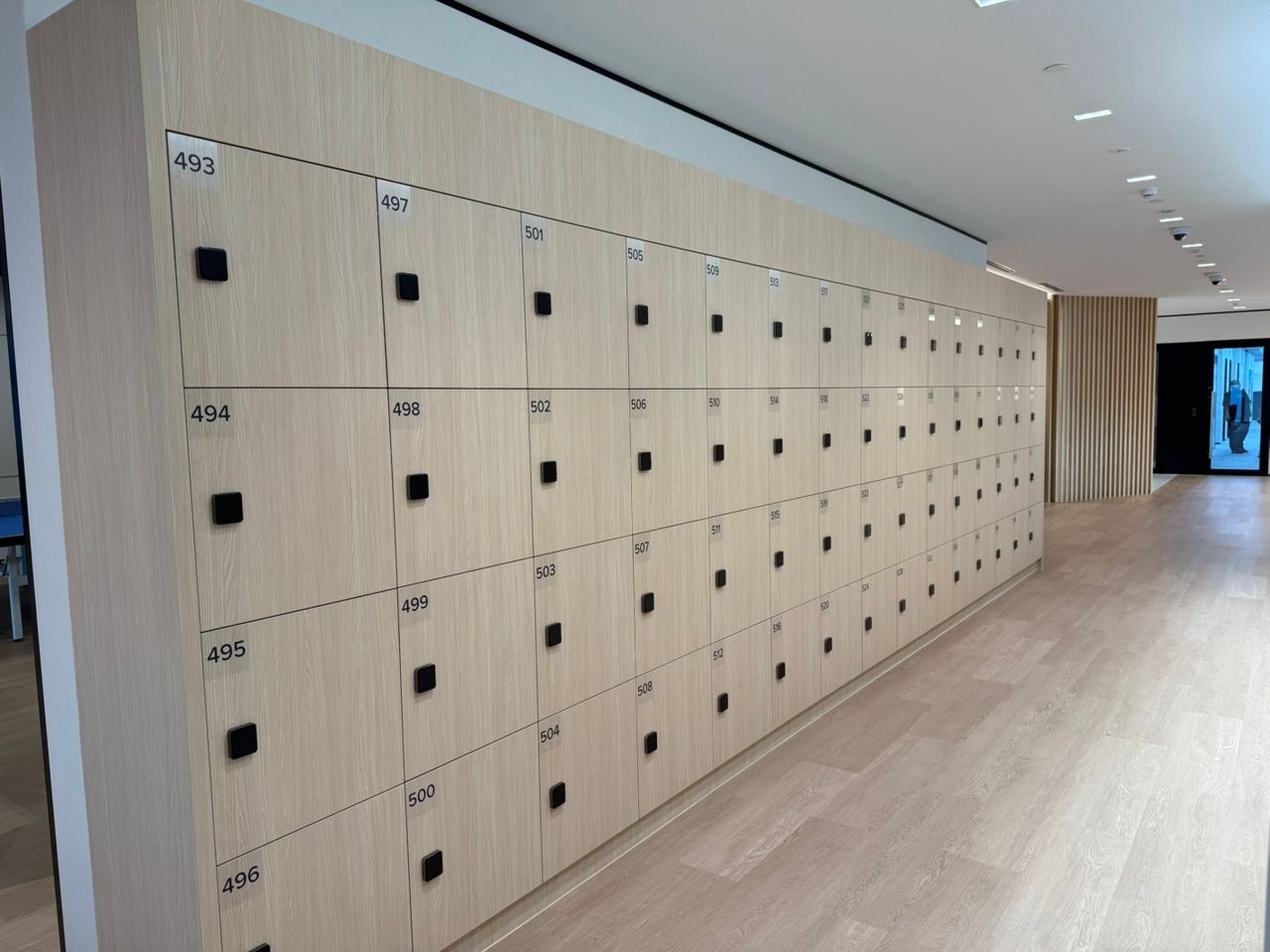Office design continues to evolve around the way people actually work today. Gone are the days of cubicles and fixed desks - the modern workplace prioritises flexibility, collaboration and employee experience.
As hybrid and activity-based work models have become standard, offices now need to support a mix of focused individual work and dynamic teamwork. The most effective spaces are designed around tasks and team interactions - fostering collaboration, stronger connections and a vibrant company culture.
To truly enable this new way of working, offices must reflect values of flexibility and agility. One of the most important (and often overlooked) components of that shift is lockers. They allow open-plan, flexible environments to function smoothly by giving employees secure, compact personal storage wherever they choose to work.
Whether you call them flexible, hot, or ABW lockers, their defining feature is adaptability — helping teams move freely and use space efficiently.
So, what are the critical features of a locker system in today’s workplace?
1. Keyless Access
Traditional lockers with key or code-based locks have been standard within workplaces in the past. Although what is not considered when purchasing these lockers is the inequity of choosing who gets allocated a locker and the hours upon hours it takes to allocate and manage access.
App-based systems and integrations with existing access cards provide the best experience for employees to access their locker and for facilities to manage their lockers without worrying about lost keys and insecure codes.
2. Minimal Management Time for Maximum Flexibility and Access
The optimal flexible locker experience starts with hot lockers that can be used at any time without friction. This means all employees can book, open and use a locker without any assistance at any time, reducing any burden on current facilities staff and providing confidence to employees. When they need a locker, they will be able to use one immediately and without a doubt. Thus, providing all employees access to a locker.
However, what becomes critical in providing an on-demand shared locker system is the ability to prevent hoarding.
3. Anti-Hoarding Mechanisms
The locker system must provide anti-hoarding mechanisms, such as setting shared use to a set amount of time, e.g. 24 hours, having bookings auto-end at a particular time or notifying facilities staff when a user has been keeping a shared locker without having used (opened) it for an extended period of time.
It is typically recommended that a hybrid system be put in place for both shared and permanent use. But how to understand what is the optimal ratio?
4. Analytics
Data is the key to a smart office and workplace. The data generated will provide the ability to understand how the lockers are being used, then visualising fluctuations in usage over the days of the week and time. This informs the optimal permanent to shared locker ratio to ensure the office assets are being used efficiently whilst maximising employee satisfaction.
These features form the fundamental pieces to establish a flexible environment, fit for today’s workplace and into the future. Yellowbox is a leader in smart locker technology, having installed flexible smart locker systems within the smartest buildings in the world. Contact the team for more information, including integrations with existing integrated workplace management systems.



























